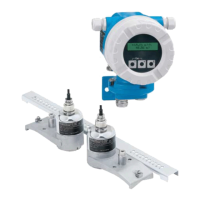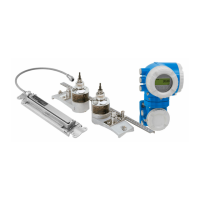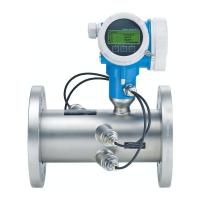Proline Prosonic Flow W 400 HART Technical data
Endress+Hauser 159
Overcurrent protection
element
The device must be operated with a dedicated circuit breaker, as it does not have an
ON/OFF switch of its own.
• The circuit breaker must be easy to reach and labeled accordingly.
• Permitted nominal current of the circuit breaker: 2 A up to maximum 10 A.
Electrical connection → 47
Potential equalization → 50
Terminals Transmitter
Supply voltage cable: plug-in spring terminals for wire cross-sections
0.5 to 2.5 mm
2
(20 to 14 AWG)
Cable entries Cable entry thread
• M20 x 1.5
• Via adapter:
• NPT ½"
• G ½"
Cable gland
M20 × 1.5 with cable 6 to 12 mm (0.24 to 0.47 in)
If metal cable entries are used, use a grounding plate.
Cable specification → 45
Overvoltage protection
Mains voltage fluctuations → 158
Overvoltage category Overvoltage category II
Short-term, temporary overvoltage Between cable and ground up to 1200 V, for max. 5 s
Long-term, temporary overvoltage Between cable and ground up to 500 V
16.6 Performance characteristics
Reference operating
conditions
• Maximum permissible error according to ISO/DIN 11631
• Specifications as per measurement report
• Accuracy information is based on accredited calibration rigs that are traced to
ISO 17025.
To obtain measured errors, use the Applicator sizing tool → 153
Maximum measurement
error
o.r. = of reading
The measurement error depends on a number of factors. A distinction is made between
the measurement error of the device (0.5% o.r.) and an additional installation-specific
measurement error (typically 1.5% o.r.) that is independent of the device.
The installation-specific measurement error depends on the installation conditions on site,
such as the nominal diameter, wall thickness, real pipe geometry or medium. The sum of
the two measurement errors is the measurement error at the measuring point.

